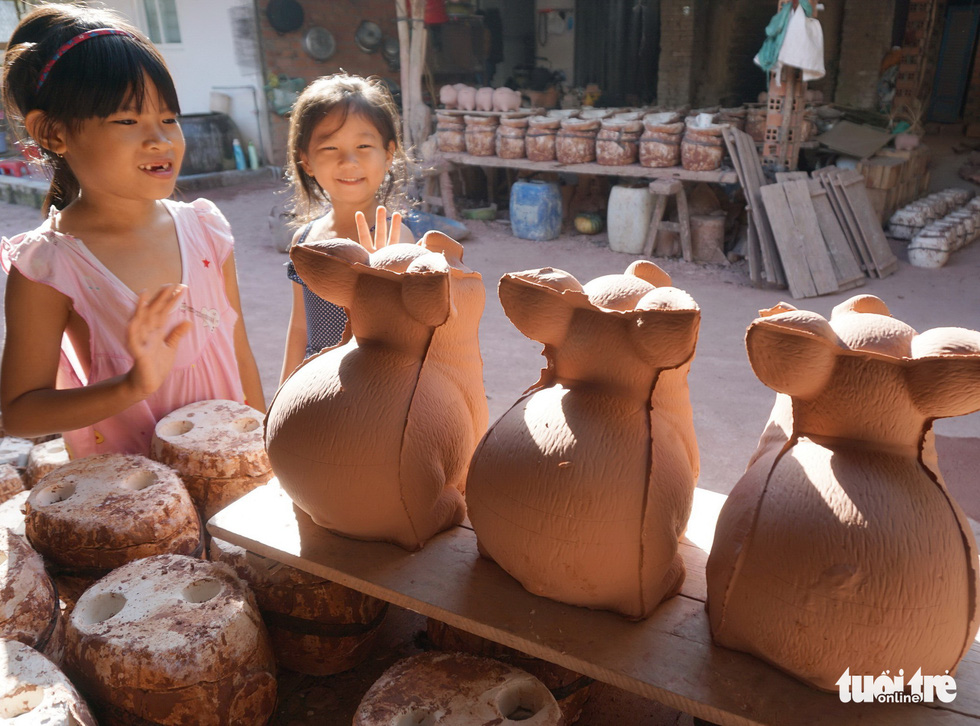As the pig is the animal zodiac sign of the upcoming lunar year, it would be fitting to visit long-standing facilities that create earthen piggy banks and see how the process unfolds in Vietnam.
Binh Duong, an economically rising province contiguous to Ho Chi Minh City, is famous for its many piggy-bank facilities and in its Tan Uyen Town, five families have made piggy banks for a living over the past two decades.
The families work averagely over 12 hours a day and each bake 4,500-8,000 clay piggy banks every month.
Their sales ascend in the run-up to the Lunar New Year, which is due in February, as people break savings-filled piggy banks to have money for shopping on the special occasion and purchasing replacements, said Nguyen Van Nhan, a local piggy-bank maker.
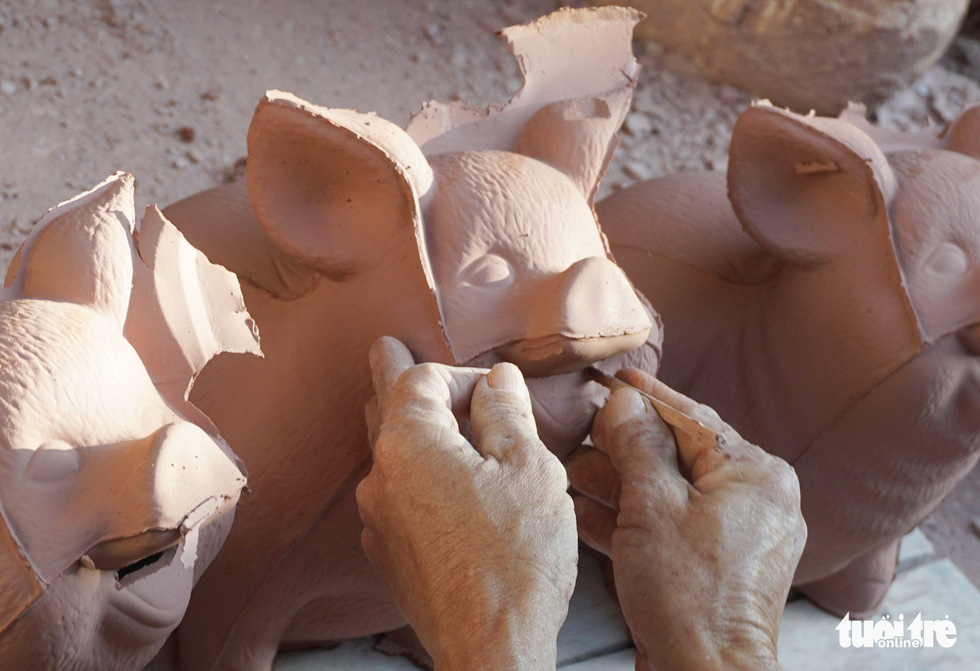 |
| A man makes a cash hole in a clay piggy bank in Binh Duong Province, southern Vietnam. Photo: Tuoi Tre |
Production and demand sink in rainy months when there is not enough sunlight to dry clay, Nhan, 51, added.
The income from selling piggy banks is sufficient to make ends meet and the profit comes mainly from the labor the households put in their products.
Only one of the five families said its members agreed to continue the piggy-bank making while the others left the tradition’s existence dependent on their children’s choice, as the parents said the job requires a lot of hard work.
The families all hope for good health and rising piggy bank prices in the future, especially around the Lunar New Year festival, which is just two weeks from now.
The process of creating a color ceramic piggy banks starts with making a liquid-form mixture from earth and water.
The mixture is then poured into a mold, and ten minutes after that some of it is removed to have a hollow inside the mold.
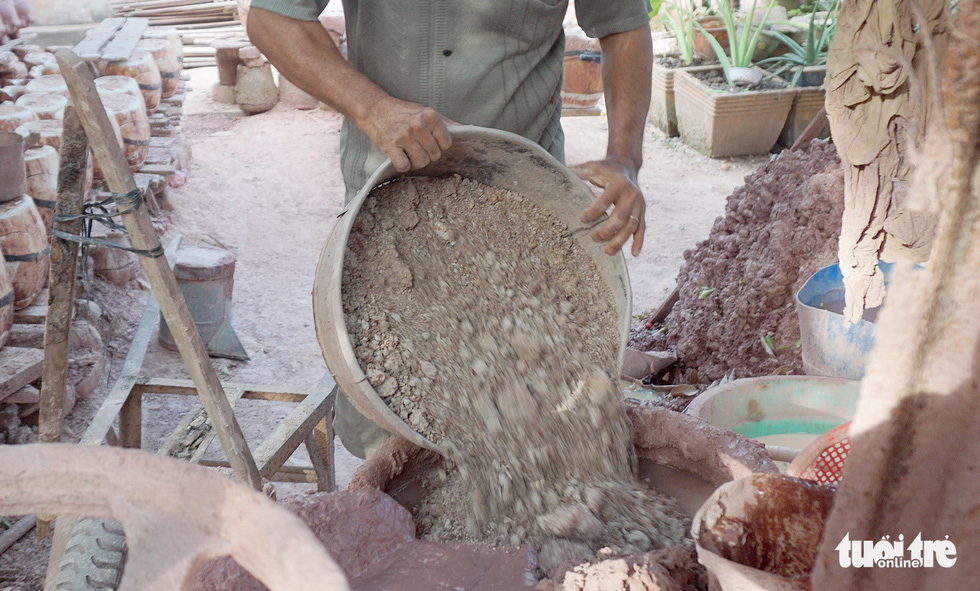 |
| A man mixes soil with water to make a liquid mixture at a piggy-bank facility in Binh Duong Province, southern Vietnam. Photo: Tuoi Tre |
 |
| A man pours a liquid mud mixture into a piggy bank mold at a facility in Binh Duong Province, southern Vietnam. Photo: Tuoi Tre |
Makers may vary the thickness of the piggy bank by adding or removing the liquid mud.
After the mixture has been left to dry for four hours, the mold is disassembled and more clay is placed along the joints.
The next stage involves cutting a small slot for putting cash through, and smoothing the piggy bank.
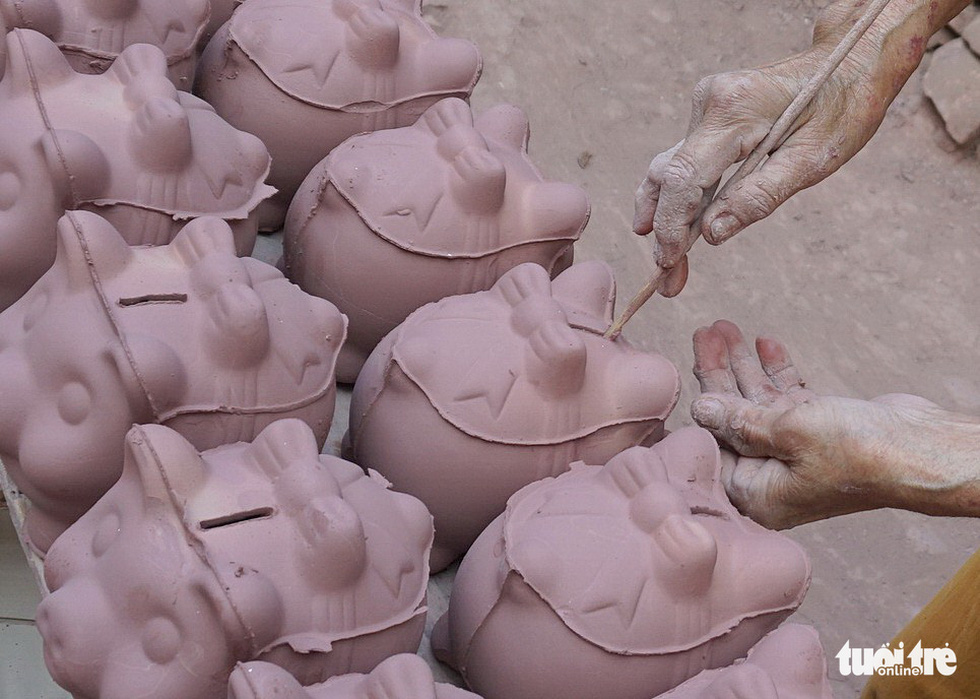 |
| A person cuts a cash slot into a clay piggy bank at a facility in Binh Duong Province, southern Vietnam. Photo: Tuoi Tre |
The item is dried in the sun to have the best quality before it is baked in a kiln, where carefulness is required in stacking piggy banks of different sizes.
The baking takes over ten hours straight and this is the most time-consuming phase.
Next the kiln is let to cool down before terracotta piggy banks are taken out and transported to Thuan An Town, which is also in Binh Duong Province but a little far way.
Here they are painted and skillfully decorated to be ready for shop shelves.
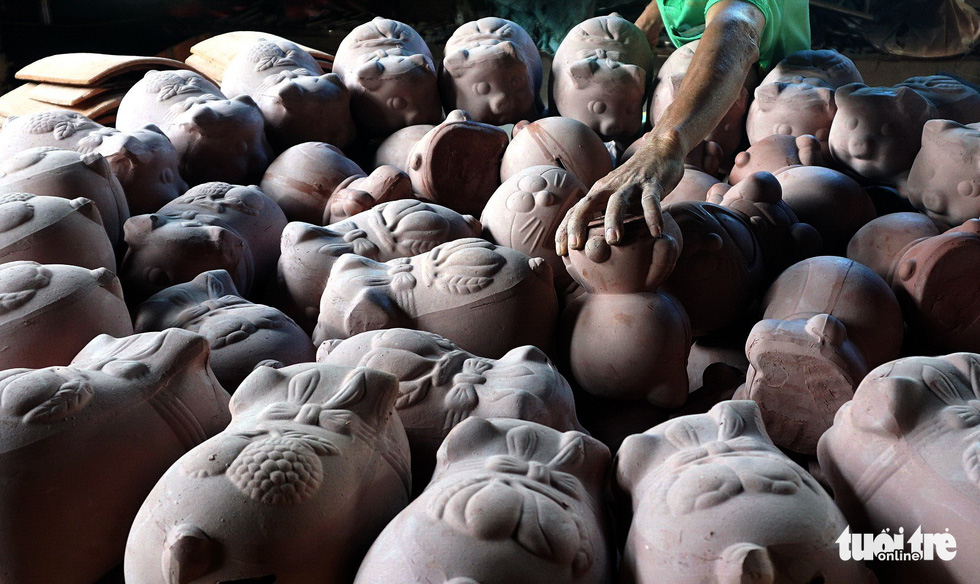 |
| A man places clay piggy banks inside a kiln in Binh Duong Province, southern Vietnam. Photo: Tuoi Tre |
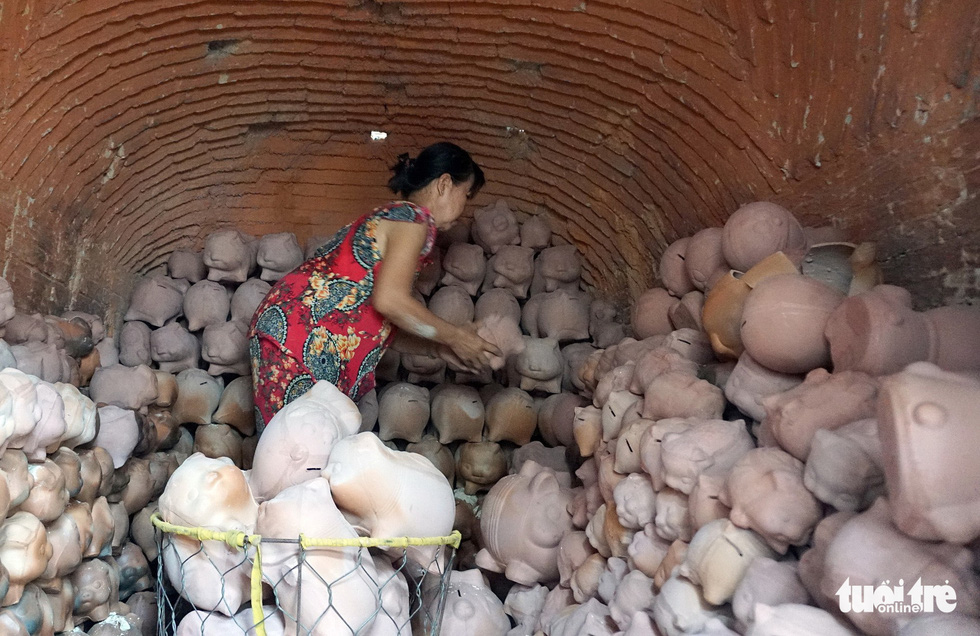 |
| A woman takes baked piggy banks from an oven in Binh Duong Province, southern Vietnam. Photo: Tuoi Tre |
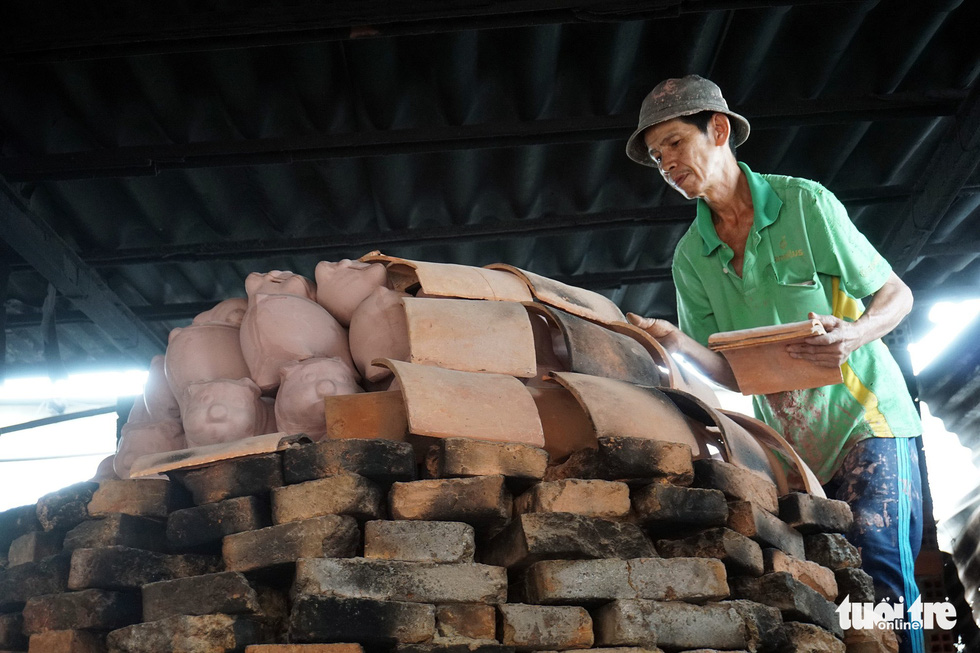 |
| A man puts tiles on clay piggy banks as they are baked in Binh Duong Province, southern Vietnam. Photo: Tuoi Tre |
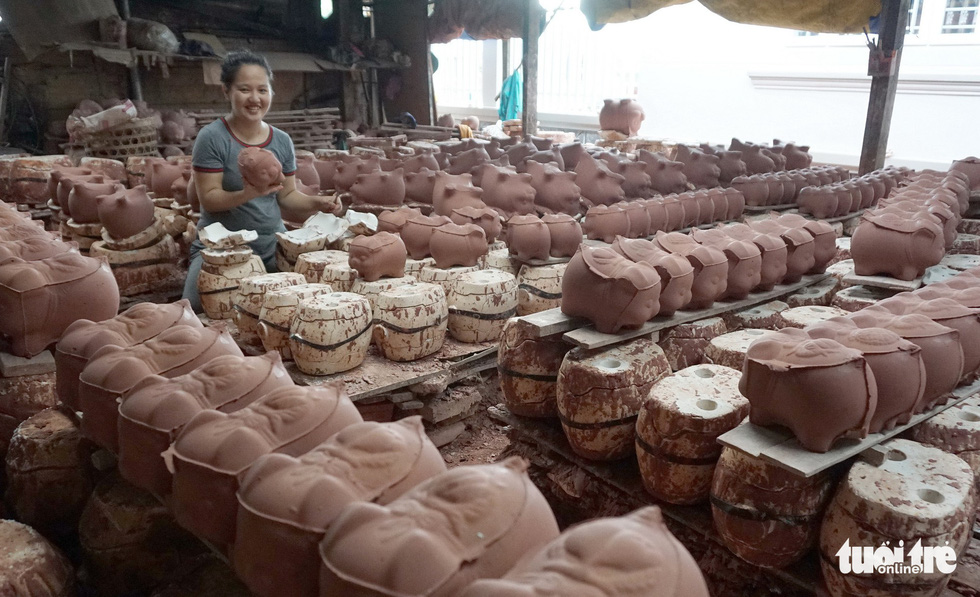 |
| A woman shows a clay piggy bank taken from a mold at a facility in Binh Duong Province, southern Vietnam. Photo: Tuoi Tre |
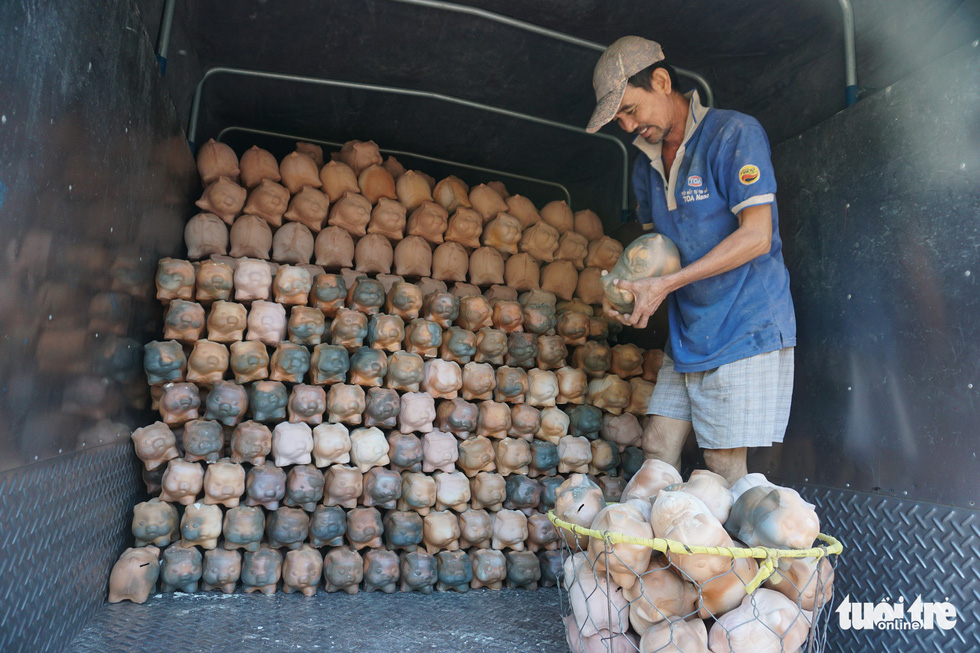 |
| A man stacks ceramic piggy banks on a truck before they are transported to another place for decoration in Binh Duong Province, southern Vietnam. Photo: Tuoi Tre |
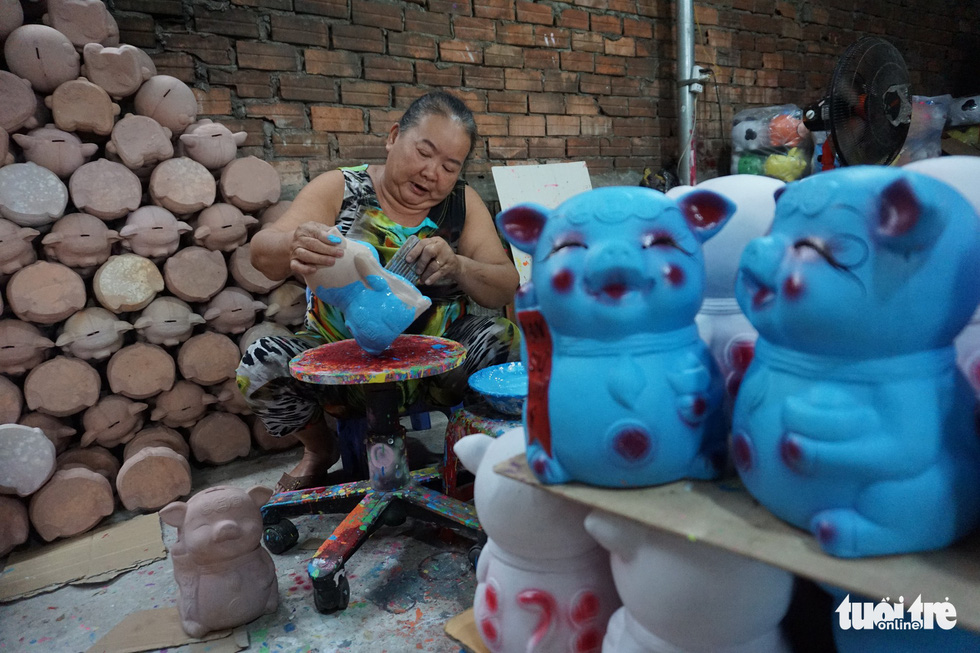 |
| A woman paints a piggy bank in Binh Duong Province, southern Vietnam. Photo: Tuoi Tre |
 |
| A woman paints a piggy bank in Binh Duong Province, southern Vietnam. Photo: Tuoi Tre |
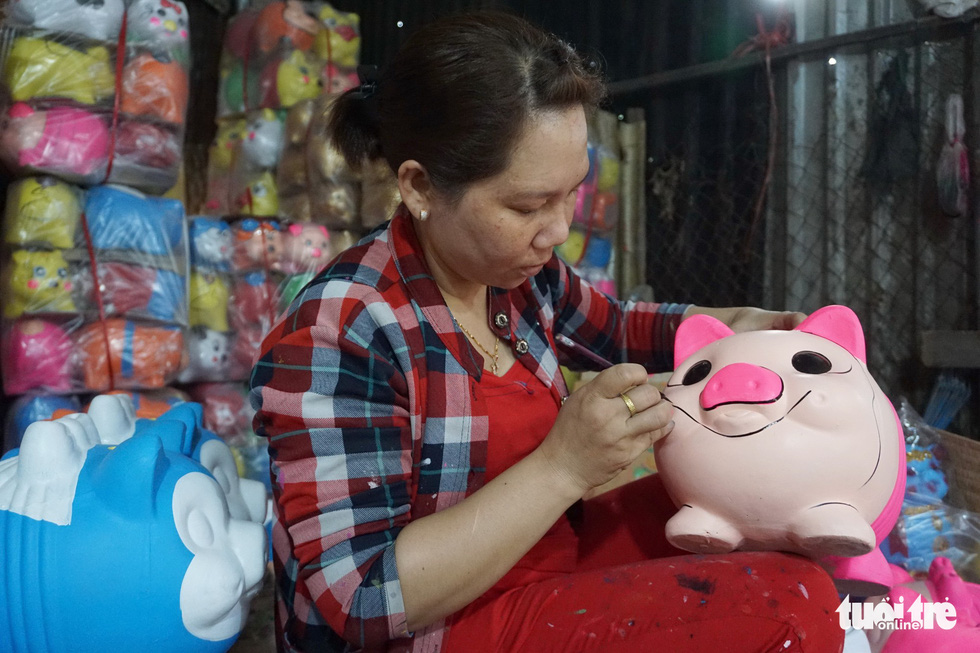 |
| A woman draws a line on a piggy bank in Binh Duong Province, southern Vietnam. Photo: Tuoi Tre |
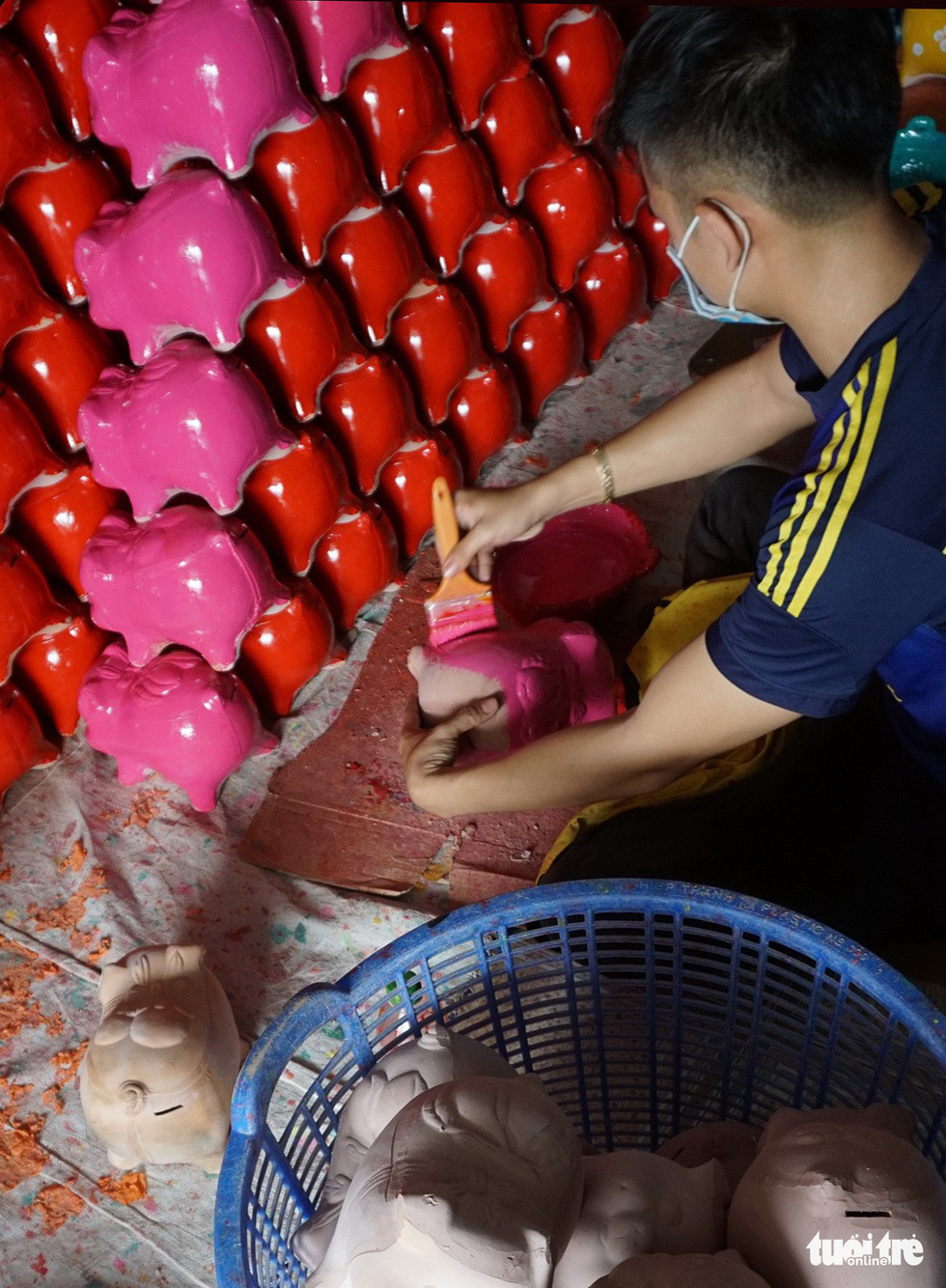 |
| A man paints a piggy bank in Binh Duong Province, southern Vietnam. Photo: Tuoi Tre |
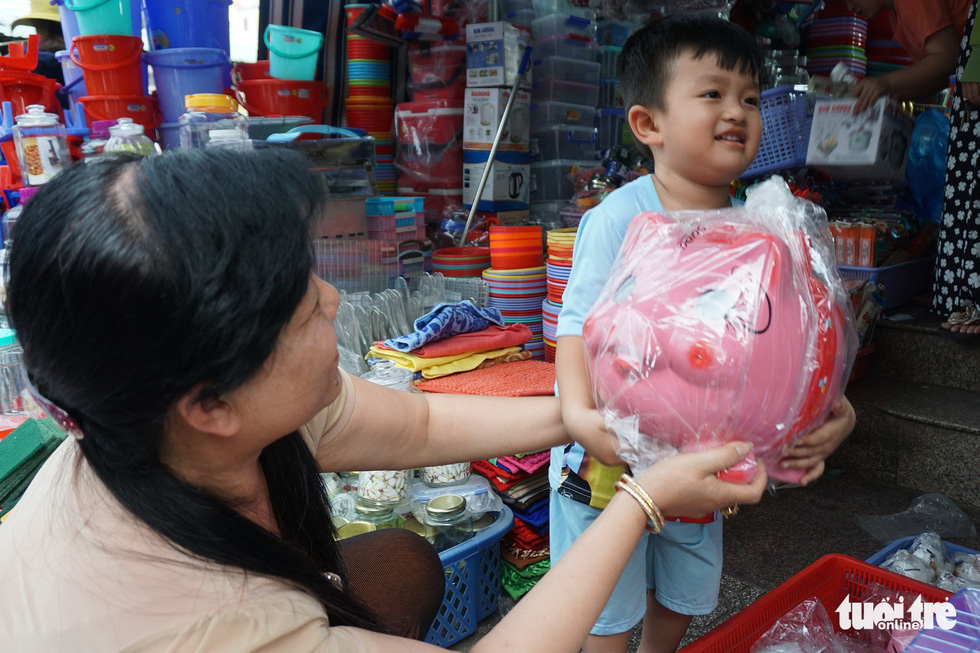 |
| A boy holds a large-size piggy bank at a shop in Ho Chi Minh City, Vietnam. Photo: Tuoi Tre |
Like us on Facebook or follow us on Twitter to get the latest news about Vietnam!



